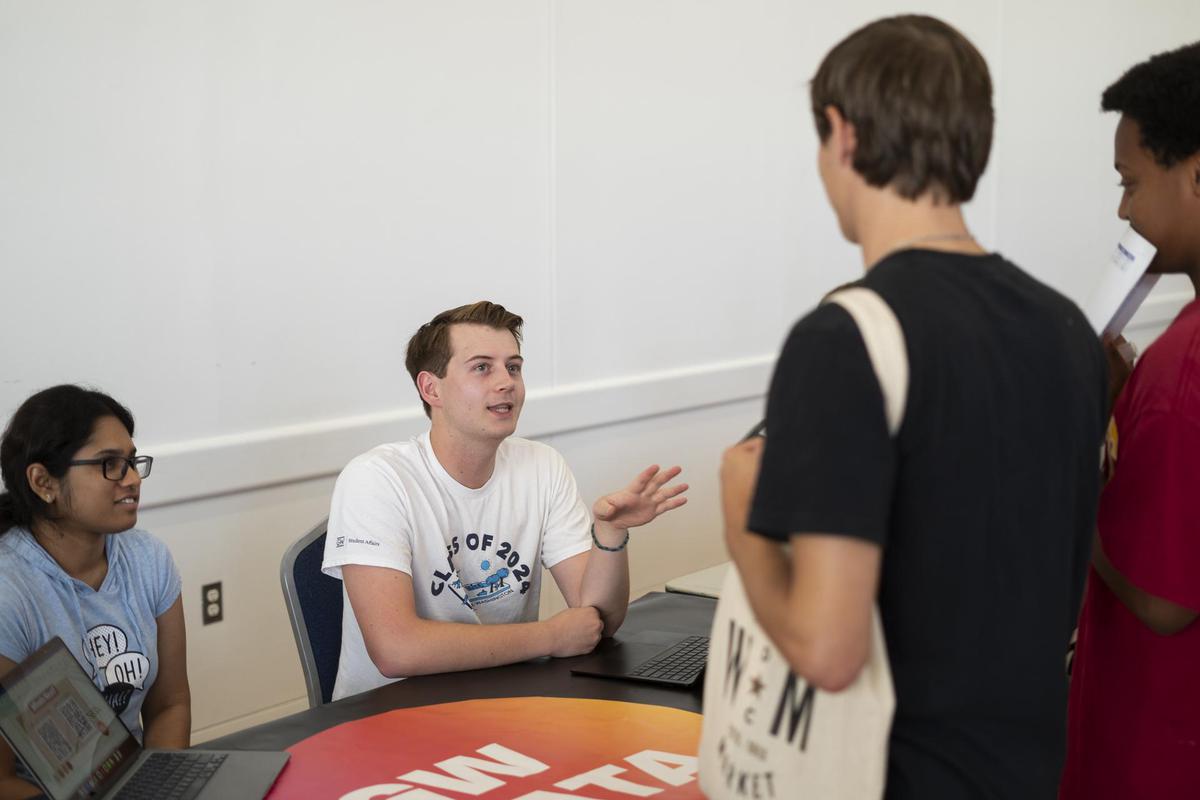Experts from the George Washington University joined colleagues in academia, industry and government at the two-day Research!America 2023 National Health Research Summit last week, discussing a range of issues in the future of global health and how it’s researched, from the effects of climate change on infection to the possible use of AI in developing groundbreaking new drugs.
“You all come with different points of view, representing nonprofits, industry, government and academia,” GW Vice Provost for Research and Professor of Mechanical and Aerospace Engineering Pam Norris said. “We all need to be in dialogue, because the solutions to the world's most pressing problems will require us to work across disciplines, across institutions and across geographic borders.”
GW’s comprehensive research enterprise, its commitment to interdisciplinary collaboration—the university is home to more than 35 cross-disciplinary research institutes—and its complementary strengths in STEM and the humanities make it an ideal partner in events like this, Norris said.
“We are preparing future lawyers, ambassadors and business leaders to be included in issues that are rooted in science—and vice versa,” she said. “We are giving future clinicians, scientists and academics some advanced skills in management, business, communications and policy.”
Frank Sesno, professor and director of strategic initiatives at GW’s School of Media and Public Affairs (SMPA), moderated an expert panel Tuesday on “Climate and Infection Control.” The conversation is an urgent one, Sesno said, as recent studies have linked rising atmospheric temperatures to increased prevalence of common pathogens in the United States. Treatment-resistant pathogen strains pose a particularly potent threat, with the Centers for Disease Control and Prevention (CDC) estimating that such infections have claimed the lives of at least 1.27 million people worldwide.
In keeping with the conference’s interdisciplinary emphasis, the panel comprised John Balbus, acting director, Office of Climate Change and Health Equity, U.S. Department of Health and Human Services; Diane Flayhart, director of global public health, antimicrobial resistance initiatives at medical technology company Becton Dickinson; Christina Hull, professor of biomolecular chemistry and medical microbiology and immunology at the University of Wisconsin-Madison; and ordained Daoist teacher Monk Yun Rou, who discussed his struggle with the chronic, debilitating condition known as “valley fever.” (The fungus coccidioides, which causes valley fever, has been detected in an increasingly wide range of locations.)
The health consequences of climate change aren’t known only to researchers, Sesno said. As a college professor, he said, he’s seen firsthand its mental and physical health impact on young people.
“I hear it from university students all the time: It's real, and it's personal, whether they're worrying about the future of the planet and whether they should have children or their own asthma,” he said.
The conference’s second day opening panel, “AI and Drug Development: What Does Pressing Forward Mean?” featured Jakub Kostal, associate professor of chemistry and co-director of GW’s Environmental and Green Chemistry Program. Moderated by PBS NewsHour correspondent and producer William Brangham, the panel also included Tala Fakhouri, associate director for policy analysis, Office of Medical Policy and Initiatives, Center for Drug Evaluation and Research, U.S. Food and Drug Administration; and David Reese, executive vice president of research and development at biotechnology firm Amgen.
AI tools might have a major role to play in developing revolutionary new drugs. Large language models and neural network computing have increased researchers’ capacity to analyze huge datasets, and the exponential growth of such datasets—including libraries that list the molecular properties of millions of commercially available compounds—may enable them to graph these molecular structures and develop new ones. That might include, for example, detecting the interaction that causes a drug’s side effects and redesigning a new version without them.
But without downplaying the possibilities that AI can offer to increase the pace of drug development, such tools have to be understood as limited and dependent on human input, said Kostal, jokingly referring to himself as the panel’s “self-nominated skeptic.”
As a scientist whose research is focused on developing computer models that can inform the design of safer chemicals, especially those used in pesticides, Kostal said, he uses AI regularly in the lab: “There are a lot of applications [in which] it's clearly very promising,” he said, “because we have a lot of reliable data to train AI on.”
But he said he is also keenly aware of how critically large language models and other AI tools are shaped by the data on which they’re trained. Even if a deep learning model’s input and mechanisms are transparent, he said, “the final network is pretty inscrutable.”
That’s a problem, for instance, if a researcher is trying to develop a molecule that will bind to specific targets. When scientists analyze the relationship of a potential drug to a binding phenomenon, they are “guided by biochemistry—by principles we understand that have been derived from observations of natural phenomena,” Kostal said. “But AI doesn't do this. AI takes a lot of data and tries to mimic those relationships. So it will be always dependent on the data that you feed it, and if you don't have enough data, or the data is not of sufficient quality, the outcomes coming out of that can be very, very bad.”




